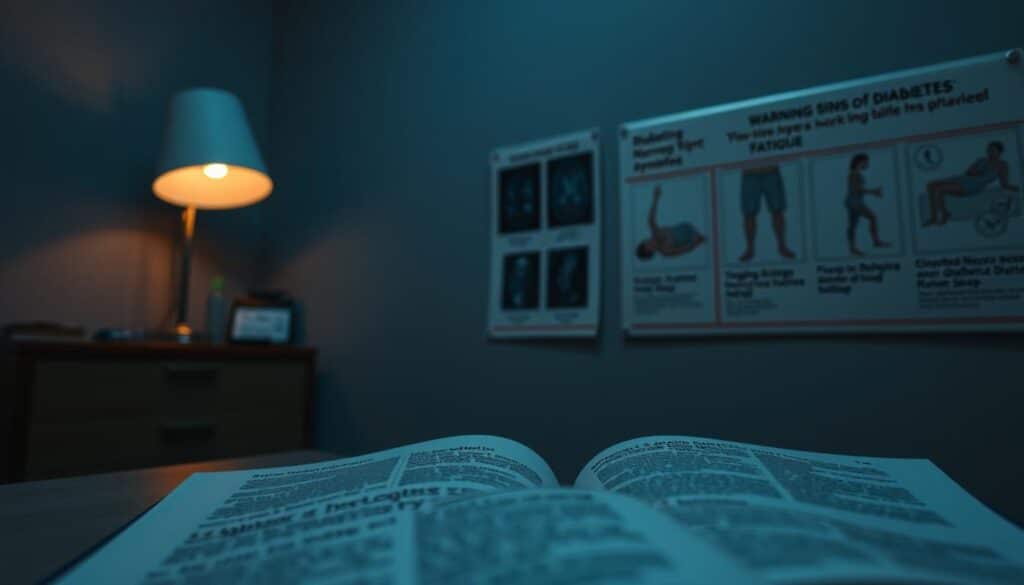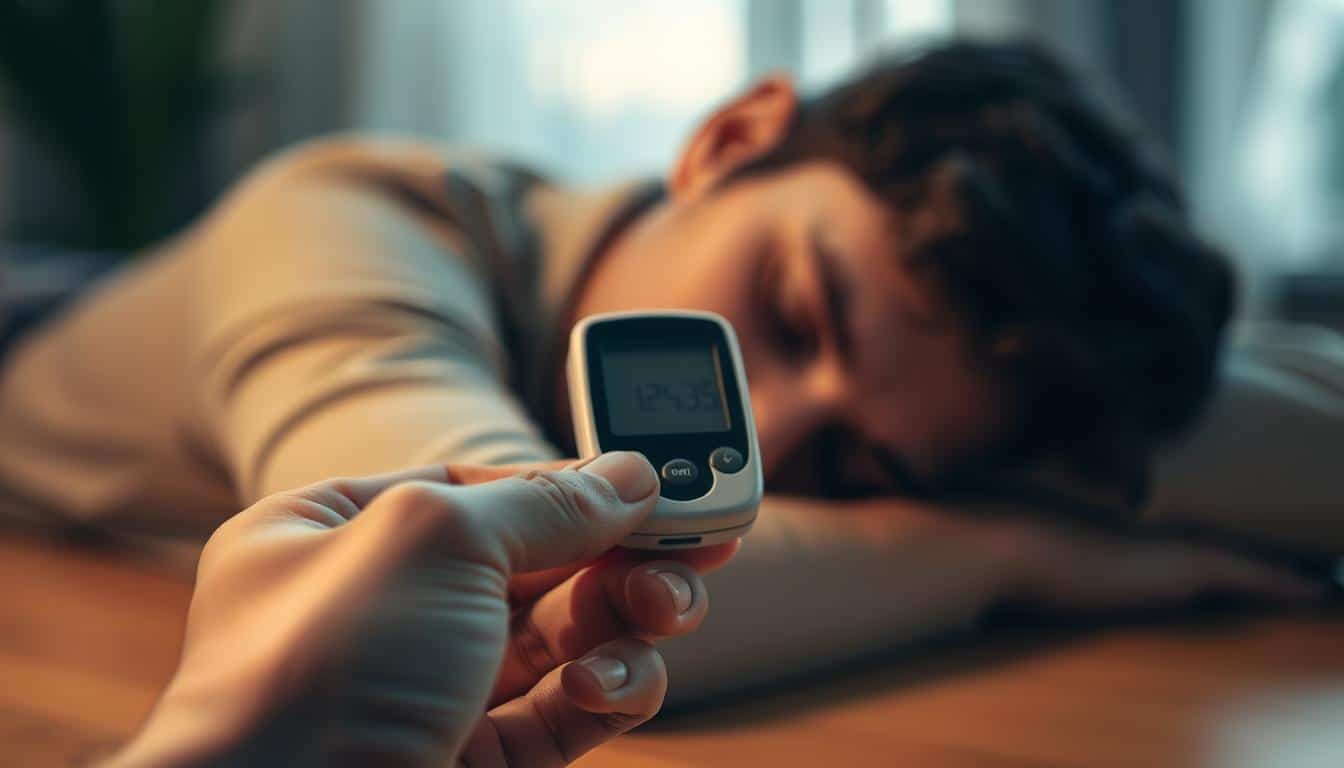That sluggish sensation following a meal isn’t just about overindulging. While occasional tiredness after eating is normal, persistent fatigue could hint at deeper issues with your body’s energy management. This article explores how blood sugar imbalances and insulin responses may leave you reaching for a nap instead of renewed vitality.
Glucose fluctuations play a critical role in post-meal energy crashes. When carbohydrates flood your system, insulin works to stabilize sugar levels. But if this process falters, your cells might struggle to access fuel efficiently—leading to that familiar slump. Over time, repeated episodes could point to prediabetes or diabetes.
However, not every post-lunch yawn means you’re facing a chronic condition. Digestive demands, meal composition, and even sleep patterns contribute to temporary drowsiness. We’ll break down the differences between ordinary tiredness and symptoms warranting medical attention.
By understanding how your body processes nutrients, you’ll gain clarity on when to consult a healthcare provider. Later sections will dive into prevention strategies, dietary adjustments, and expert-backed approaches to maintaining steady energy levels throughout the day.
Is feeling sleepy after eating a sign of diabetes
Your afternoon slump could be whispering clues about metabolic health. While temporary drowsiness often follows large meals, recurring exhaustion after eating might suggest irregular blood sugar patterns. The key lies in how insulin manages energy distribution throughout your system.
Understanding the Diabetes Connection
Insulin acts as your body’s energy traffic controller. When cells resist its signals, glucose accumulates in the bloodstream instead of fueling your muscles and organs. This mismatch often creates sudden energy crashes paired with unrelenting thirst or unexpected weight changes. Blurred vision and frequent restroom trips frequently accompany these episodes.
When to Consult a Healthcare Professional
Track patterns if you experience multiple symptoms simultaneously. Occasional tiredness alone rarely indicates serious health issues, but combined with persistent hunger or skin changes, it warrants investigation. Medical experts recommend blood tests if you observe three or more warning signs over two weeks.
Your body communicates through various signals—learning to interpret them holistically helps distinguish normal reactions from potential red flags. Prioritize comprehensive checkups over self-diagnosis, especially when changes affect daily health routines.
How Blood Sugar Levels Impact Your Energy After Meals
That post-meal crash isn’t always about portion size—it’s about biochemistry. Your blood sugar levels act like a seesaw, directly influencing whether you feel energized or drained. When food enters your system, carbohydrates break down into glucose, triggering insulin release to shuttle fuel into cells.
The Role of Glucose and Insulin
Imagine insulin as a delivery driver for cellular energy. Efficient transport keeps sugar levels stable, but resistance at cell doors causes glucose pileups in your bloodstream. This mismatch forces your pancreas into overtime, creating energy spikes followed by abrupt crashes. Over time, this strain may increase risks for type diabetes.
Complex vs. Simple Carbohydrates
Not all carbs play the same role. Simple sugars flood your system quickly, overwhelming insulin’s capacity. Whole grains and fiber-rich foods release glucose gradually, maintaining steadier energy levels. Swapping white bread for quinoa or adding veggies to meals helps prevent dramatic sugar swings.
Your lifestyle choices determine how smoothly this process runs. Pairing proteins with carbs slows absorption, while hydration supports metabolic efficiency. For people diabetes concerns, consistent meal timing becomes crucial for managing these biological rhythms.
Other Factors Contributing to Post-Meal Fatigue
Beyond blood sugar fluctuations, everyday choices significantly influence your energy after meals. What you drink, how much you consume, and even prescription routines can tip the scales between alertness and exhaustion.

Overeating and Heavy Meals
Large portions demand more digestive effort, redirecting blood flow to your stomach. This temporary shift can leave other systems feeling deprived of resources. Rich, fatty foods compound this effect by slowing digestion—like trying to run a marathon after carrying a weighted backpack.
Hydration, Alcohol, and Medication Effects
Dehydration mimics fatigue by reducing blood volume, forcing your heart to work harder. Alcohol amplifies drowsiness by depressing nervous system activity. Certain antihistamines or blood pressure drugs list tiredness as a common side effect.
Balancing meals with lean proteins and complex carbohydrates helps stabilize energy. Drinking water before eating improves metabolic efficiency, while limiting alcohol to one serving prevents midday crashes. Review medications with your doctor if fatigue persists despite dietary adjustments.
Your sleep quality and meal timing also play roles. Eating late disrupts circadian rhythms, while inconsistent food schedules confuse your body’s energy management systems. Small changes often yield noticeable improvements in post-meal vitality.
Recognizing Abnormal Sleepiness and Diabetes-Related Symptoms
Unrelenting fatigue following food intake could signal underlying health issues. While occasional tiredness is normal, patterns combining multiple symptoms demand attention. Key indicators often appear subtly before escalating into more severe conditions.

Common Warning Signs Beyond Fatigue
Watch for unexpected weight changes despite stable eating habits. Frequent thirst paired with excessive bathroom trips often accompanies blood sugar imbalances. Blurred vision and tingling extremities may develop as circulation suffers.
Skin darkening around neck creases or sudden appetite spikes can also serve as clues. These factors frequently cluster together, creating a clearer picture of metabolic distress. Documenting their frequency helps separate routine reactions from potential red flags.
Monitoring Your Symptoms Day-to-Day
Track energy dips alongside other changes using a simple journal or app. Note meal times, portion sizes, and accompanying symptoms like dizziness or irritability. Patterns spanning several days often reveal connections missed in single episodes.
Compare weekly logs to identify worsening trends. Sudden drops in physical stamina or mental focus warrant professional evaluation. Early detection significantly improves management outcomes for chronic conditions.
Prioritize quality sleep and balanced nutrition during observation periods. Eliminate variables like dehydration or medication side effects before drawing conclusions. Your documented observations become powerful tools during medical consultations.
Lifestyle and Dietary Adjustments to Boost Energy
Revamping daily habits can transform how your body processes energy. Small, consistent changes often yield significant improvements in post-meal alertness and overall vitality. Focus on sustainable tweaks rather than overnight overhauls.
Fueling Better Sleep and Movement
Prioritize 7-9 hours of quality sleep nightly. Establish a dark, cool bedroom environment and avoid screens before bed. Morning sunlight exposure helps reset circadian rhythms, enhancing daytime energy.
Incorporate 30-minute walks after meals. This simple practice aids glucose absorption and reduces post-meal sluggishness. Strength training twice weekly builds muscle mass, improving metabolic efficiency.
Smart Food Choices for Steady Energy
Build meals around fiber-rich vegetables and lean proteins. These slow digestion, preventing sudden glucose spikes. Swap processed snacks for nuts or Greek yogurt to maintain stable blood sugar.
Monitor portion sizes using hand measurements—protein palm-sized, carbs fist-sized. Avoid eating within three hours of bedtime to support digestion and sleep quality. Staying hydrated reduces false hunger signals that mimic fatigue.
Chronic urination or unusual thirst may indicate disease risks. Pair dietary changes with annual checkups to monitor metabolic health. These strategies work synergistically to reduce energy crashes and support long-term wellness.
Expert Insights and Prevention Strategies
Nutritionists and doctors agree that proactive measures can mitigate metabolic risks. Certified professionals emphasize combining dietary awareness with medical oversight to address energy crashes effectively. Early intervention often prevents minor imbalances from escalating into chronic conditions.
Advice from Certified Professionals
Dr. Joyce L. Roberts recommends pairing complex carbs with lean proteins at every meal. “This balance slows glucose absorption,” she explains, “reducing strain on insulin-producing cells.” Endocrinologist Dr. Farizani suggests testing blood sugar if fatigue persists despite dietary changes. Both experts stress hydration’s role in nutrient transport and waste removal.
For those managing hypoglycemia, small frequent meals prove more effective than three large portions. A 2023 clinical trial showed participants reduced energy crashes by 40% using this approach alongside daily activity tracking.
Preventive Measures for Better Overall Health
Monthly fasting glucose tests provide early warnings for prediabetes. Swap processed foods with magnesium-rich options like spinach and almonds—this mineral supports insulin function. Ten-minute post-meal walks improve circulation, helping cells utilize glucose efficiently.
Document energy levels alongside meal times using apps like MyFitnessPal. Patterns revealing consistent slumps after sugary snacks could indicate sign diabetes risks. Schedule annual A1C tests if you experience unexplained feeling tired episodes or sudden weight shifts.
These strategies create layered protection against metabolic decline. Consistency matters more than perfection—build one new habit weekly while consulting your healthcare team for personalized adjustments.
Conclusion
Your energy crashes after meals often stem from complex interactions between biology and daily choices. While low blood sugar crashes may signal metabolic problems, factors like meal timing and hydration also shape how you feel throughout day.
Persistent tiredness following meals warrants attention—especially with weight loss or high blood sugar concerns. Nutritionists emphasize combining fiber-rich foods with activity breaks to stabilize energy. Tracking patterns helps distinguish normal reactions from potential problems needing professional evaluation.
Simple changes often yield big results. Swap processed snacks for balanced options to avoid low blood sugar dips. Stay hydrated and prioritize sleep to maintain vitality throughout day. Those experiencing unexplained weight loss alongside fatigue should consult healthcare providers promptly.
Proactive habits create lasting change. Use food journals to identify triggers and celebrate small wins. Remember: occasional tiredness differs from recurring high blood sugar symptoms. Your daily choices today shape tomorrow’s metabolic resilience—start with one actionable step and build from there.
FAQ
Can post-meal fatigue indicate unstable blood sugar levels?
Yes, sudden energy crashes after meals may signal glucose spikes or hypoglycemia. When insulin struggles to manage carbohydrates, your cells might not receive adequate fuel, causing drowsiness. Persistent issues could hint at prediabetes or type 2 diabetes.
How do carbohydrates affect energy fluctuations?
Simple carbs like white bread cause rapid glucose surges, often followed by crashes. Complex carbs (e.g., whole grains) digest slowly, stabilizing sugar levels. Pairing carbs with protein or fiber further prevents sudden fatigue.
Could frequent urination or unexplained weight loss relate to diabetes?
Yes. Excess glucose in the bloodstream forces kidneys to work harder, increasing urination. Weight loss without diet changes may occur if cells can’t access glucose for energy, prompting the body to burn fat instead.
Does dehydration worsen post-meal tiredness?
Absolutely. Poor hydration thickens blood, making it harder for insulin to function. Alcohol and certain medications (e.g., antihistamines) can also amplify drowsiness after eating.
What lifestyle changes reduce energy crashes?
Prioritize sleep hygiene, daily movement, and balanced meals. The CDC recommends 150 minutes of weekly exercise. Opt for smaller portions and nutrient-dense foods like leafy greens or lean proteins to avoid overtaxing digestion.
When should someone consult a doctor about meal-related fatigue?
Seek medical advice if drowsiness persists alongside blurred vision, excessive thirst, or slow-healing wounds. The American Diabetes Association advises testing blood sugar levels if symptoms recur over weeks.
Can stress or thyroid issues mimic diabetes symptoms?
Yes. Chronic stress elevates cortisol, disrupting glucose metabolism. Hypothyroidism also slows metabolism, causing fatigue. A healthcare provider can perform tests to rule out these conditions.
Are there tools to track post-meal energy patterns?
Continuous glucose monitors (CGMs) like Freestyle Libre provide real-time data. Apps such as MyFitnessPal log meals and symptoms, helping identify triggers like processed sugars or oversized portions.


